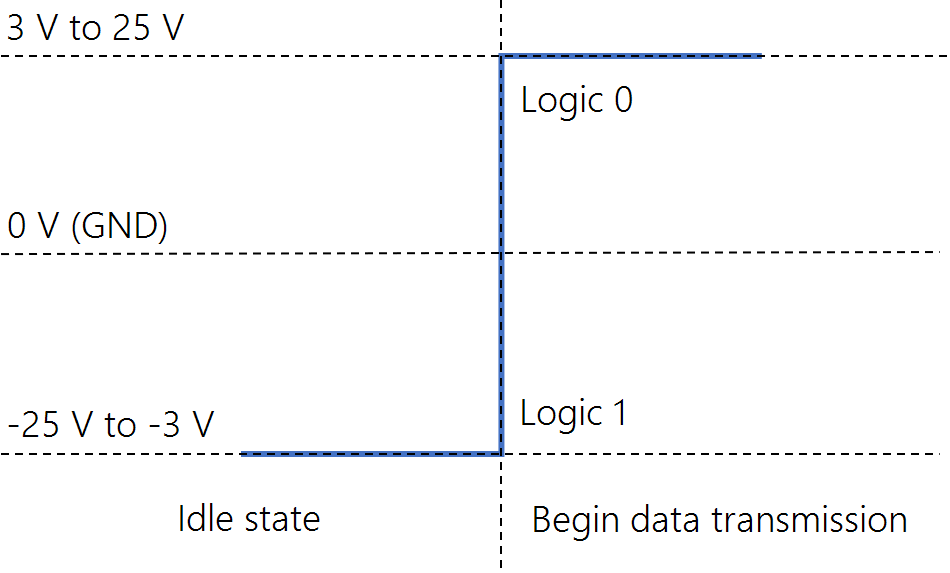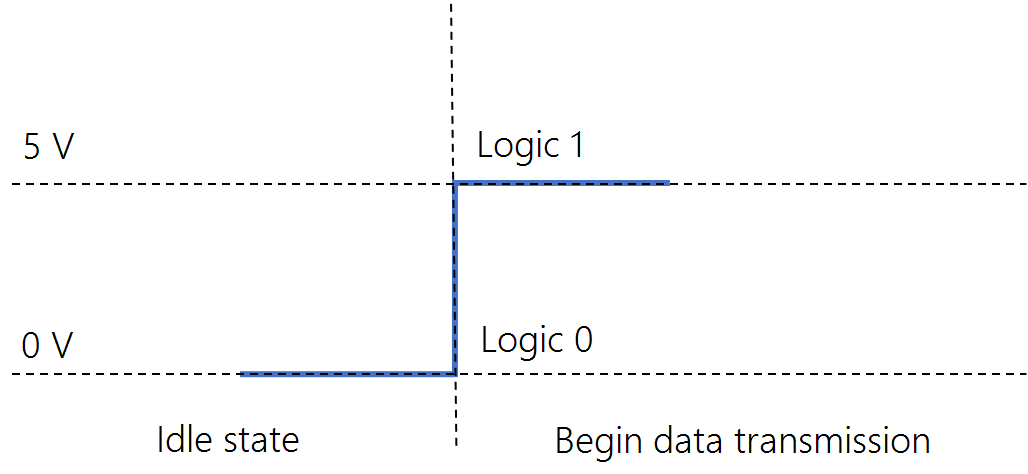RS-232
RS-232 supports point-to-point communications between one base (usually the data logger) and one external device. See RS-232 single-ended full-duplex communications. Data bits are sent from the base to external devices across the transmit (Tx) line with respect to DC ground. The Tx line idle state is between –25 V and –3 V, depending on the transmitter. The transition from negative voltage to above 3 V begins data transmission.
Most RS-232 devices are also compatible with the data logger using TTL-inverted communications.
The data logger uses about -7 V to represent logic 1, and about 5.8 V to represent logic 0.
RS-485/RS-422
The CR350 uses about -1 V to represent logic 0, and about 1 V to represent logic 1.
TTL
TTL supports point-to-point communications between one base and one external device. See RS-232 single-ended full-duplex communications. Data bits are sent from base to external device with a voltage between transmit (Tx) and ground. The transmit line idle state is 5 V (logic 1). Data is sent after one clock cycle once the voltage is pulled low (to 0 V).
TTL-Inverted
The only difference between TTL-inverted and TTL is that the logic is inverted. The idle state for TTL-inverted is 0 V instead of 5 V. See RS-232 single-ended full-duplex communications. Data is sent after the voltage is pulled high (to 5 V).
Many RS-232 devices are compatible with this communications protocol.



